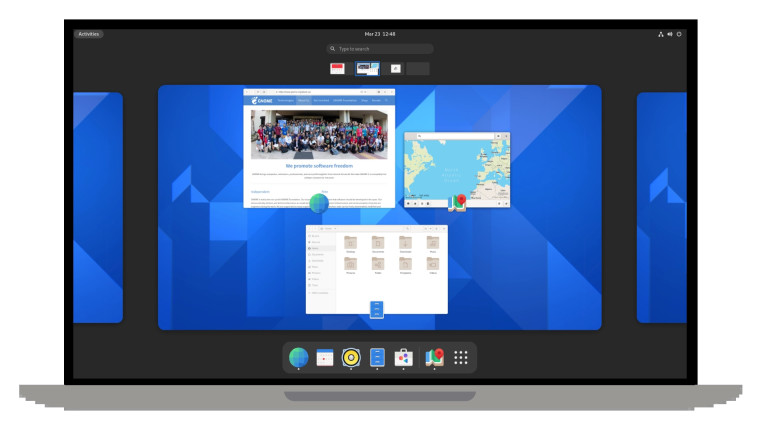
The GNOME Project has announced the release of GNOME 44 for Linux desktops. This update is codenamed Kuala Lumpur, the capital city of Malaysia. This name was picked to show recognition to the organizers of the GNOME.Asia 2022 event. With this update, the developers have improved the Settings app, the quick settings menu, and streamlined the Software app.
With GNOME 44, four of the panels in the Settings app have been updated, these include Device Security, Accessibility, Sound, and Mouse & Touchpad. In the Mouse & Touchpad panel, for example, there are now videos that demonstrate the available options. This should make options easier to understand for users. In the Sound settings also, the volume level control has now been moved to a separate window making it easier for users to access output and input controls.

In GNOME 43, which shipped with Fedora 37, a new quick settings menu was added when you pressed the buttons in the upper right of the display. With GNOME 44, this menu has been improved further. There’s a new Bluetooth button which shows connected devices and lets you allow devices to be connected and disconnected, it now shows open apps that are running without an open window to help you work out what may be hogging processing power, and there are descriptions for each of the toggle buttons to alert you of the status of each setting.
The other major improvement highlighted by the developers is the improved Software app. For those who have never used GNOME, the Software app is essentially an app store but can also centrally control system updates. With GNOME 44, this app is now smoother and faster when moving between pages. Flatpak support is also improved as runtimes can automatically be removed when not needed to save disk space. A couple of UI enhancements also mean better-looking reviews and error messages.
If you want to read the list of changes in GNOME 44, head over to the announcement. If you’re keen to start using GNOME 44, be patient. Wait for it to be included in your preferred Linux distribution as optimizations may have to be made. Some distributions that will send out the update quickly are those based on Arch Linux and Fedora.